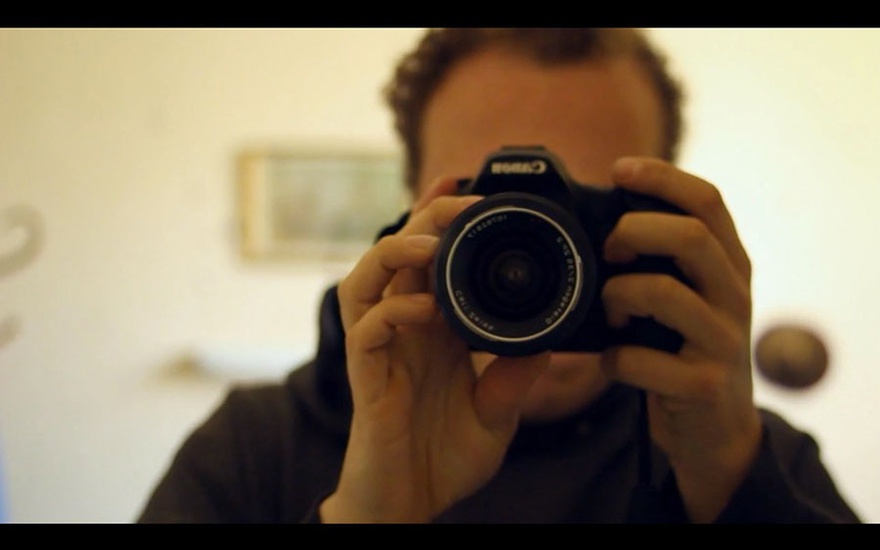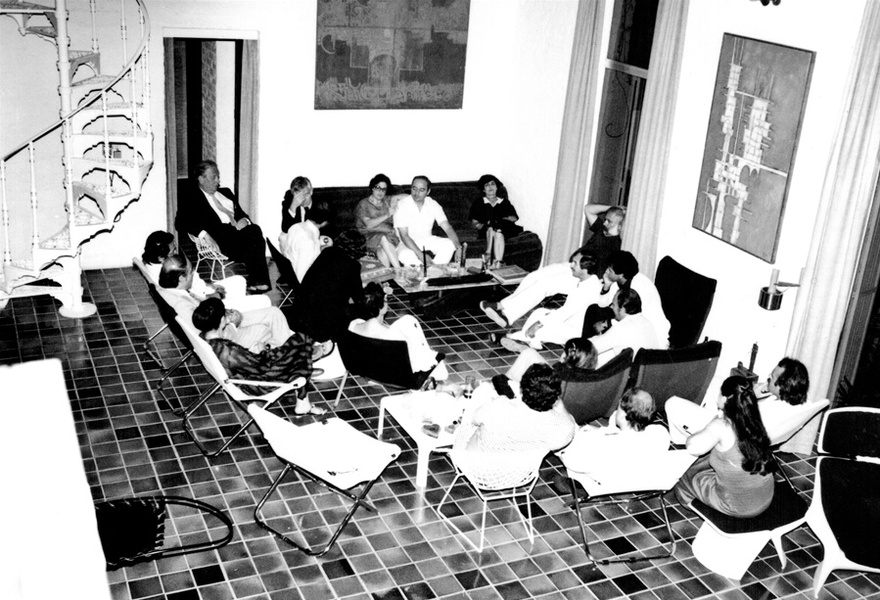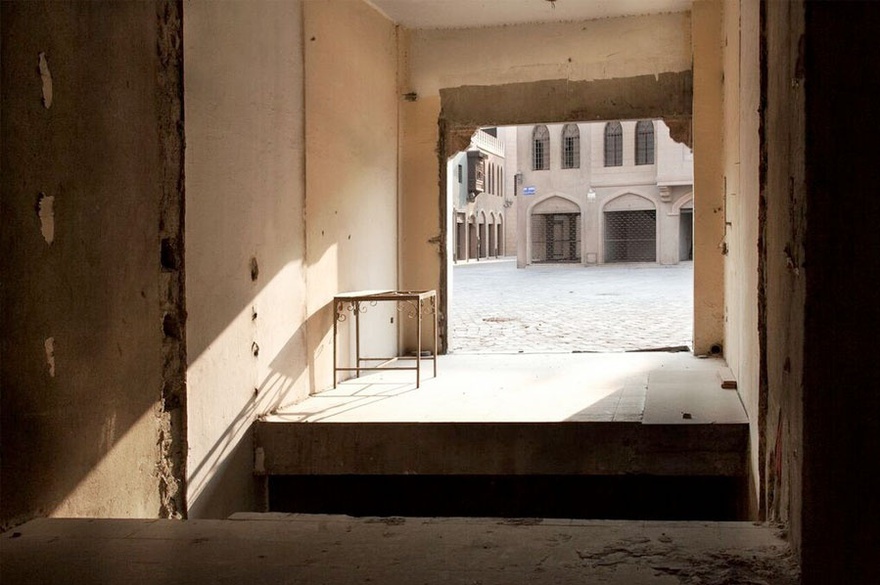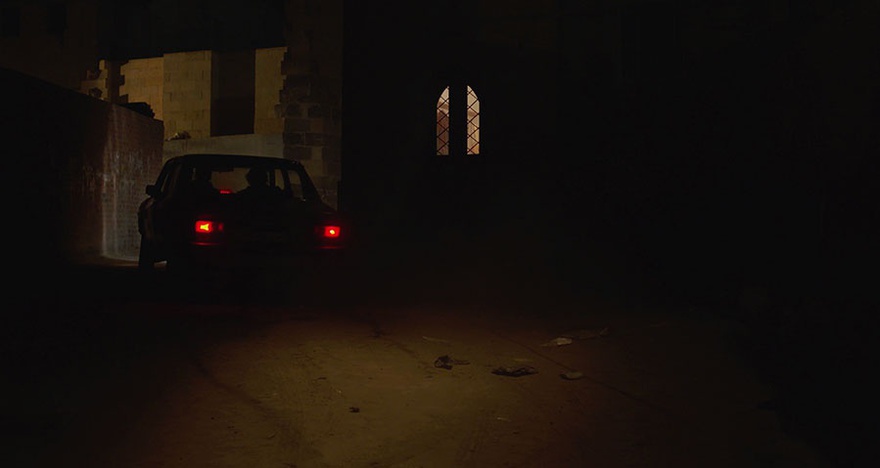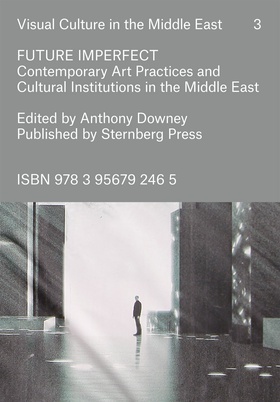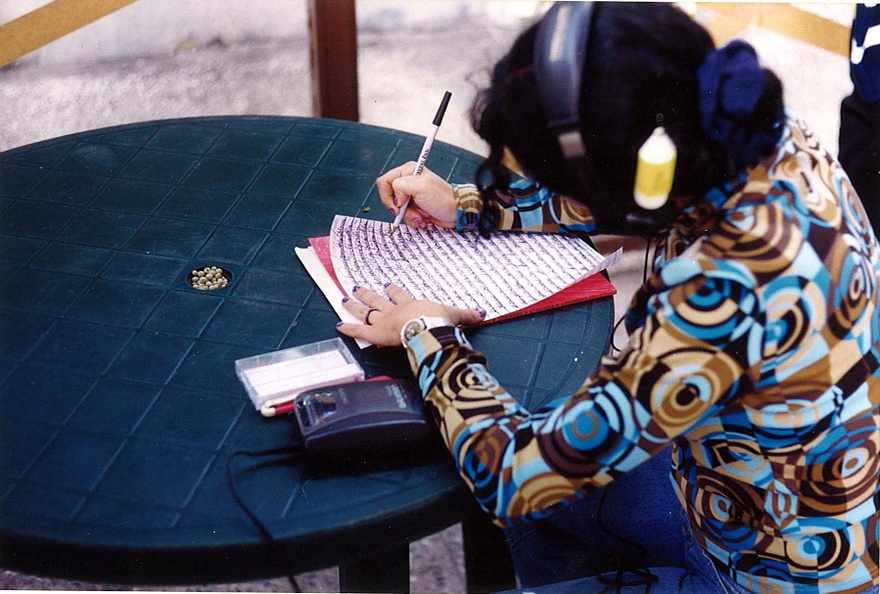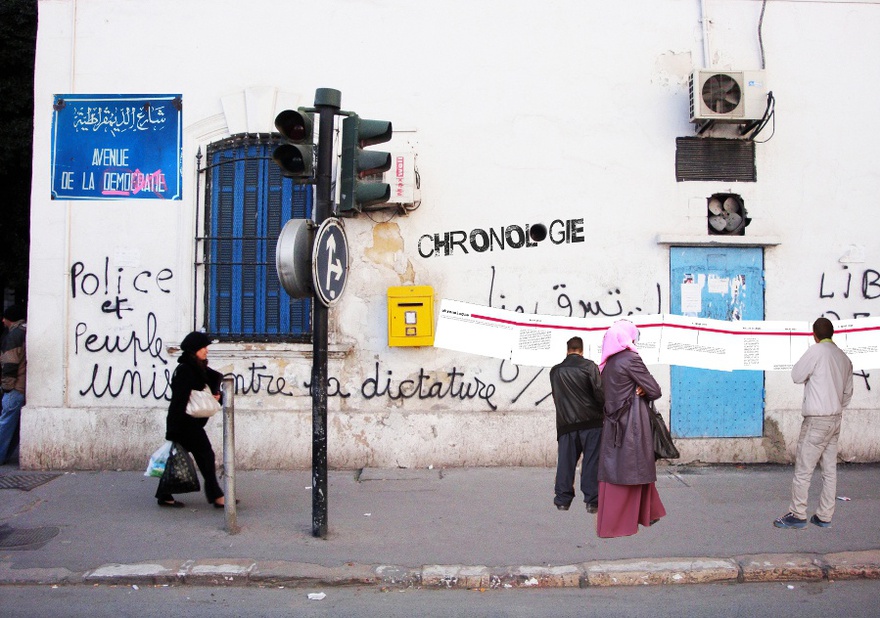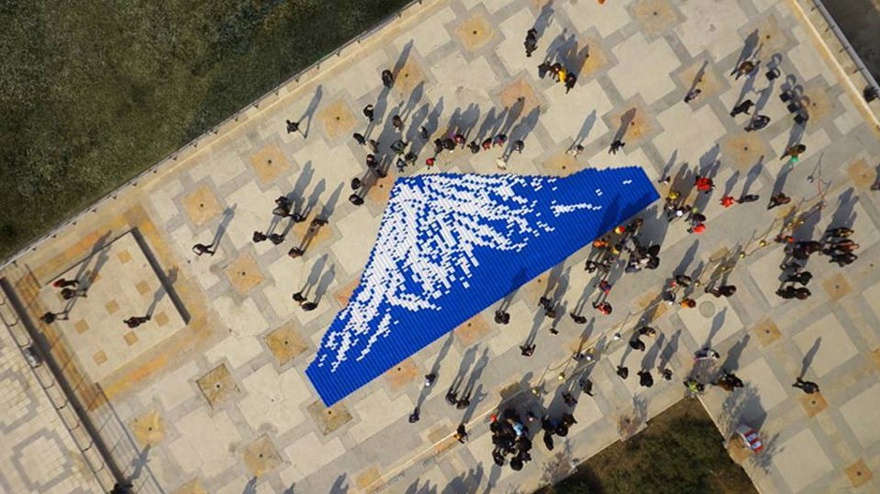Essays
Where to Now: Shifting Regional Dynamics and Cultural Production in North Africa and the Middle East
Platform 010 Editorial
From the outset of Platform 010, we posed an overarching and, hopefully, inclusive question: where to now? Intentionally open-ended, this query sought to bring together questions from previous platforms – which focused on, amongst other things, the emergence of new media, digital archiving, new practices, and institutional contexts – and focus attention on both traditionally recognizable issues and more emerging concerns. In a broader context, we wanted to enquire into what, if anything, the regional politics of cultural production across North Africa and the Middle East reveals about the politics of global cultural production today. What, in sum, are the most urgent issues affecting cultural production within the region and where do we go from here?
Needless to say, we had a wide variety of responses, many of which reacted directly to the question suggesting, in turn, a number of nascent anxieties in relation to both institutions and practices more generally. Elsewhere, we worked with artists and writers to develop overviews and insights into the present state of affairs and their historical contexts. The one thing that arose again and again throughout these contributions, and despite the often-parlous state of cultural institutions (be they private galleries, public museums, foundations, and publishing initiatives, to name but a few), is the continued, unabated energy surrounding cultural production within the region. If Platform 010 is a testament to anything, it is to the fact that cultural practices are finding new and innovative ways to develop and thrive in the face of often insurmountable and frankly daunting odds.
Nevertheless, the extent to which cultural institutions, and the practitioners who work in and support them, are being placed under intolerable pressures continues to be a significant issue. Despite this upsurge in post-revolutionary cultural production, the geopolitics of the Middle East, as complex as they are, reveal a disquieting number of recurring misgivings about the historical development of cultural institutions and their current condition. It is the recurrence of these issues, in all their sociopolitical specificities and historically relative contexts, that informed Future Imperfect: Contemporary Art Practices and Cultural Institutions in the Middle East (Sternberg Press, 2016), which was published to coincide with Platform 010. Throughout that volume, we asked a singular, but far from straightforward, question: if we consider cultural institutions as barometers of sorts for acknowledging and registering, if not forecasting, prevailing social, political, historical and cultural conventions, then to what extent does their current state, and the demands placed upon them, give cause for concern when it comes to considering the future status of visual culture and cultural production across the region?
Since the launch of Platform 010, for example, it has become all the more notable how state agencies have become more emboldened in their outright distrust of cultural producers and the institutions they represent. The political constraints placed upon, and simultaneous neglect of, cultural production has been all the more exacerbated by the relative absence of private sector funding and the presence of cultural policies that reveal a disconcerting lack of legislation fit for the purpose of ensuring models of institutional engagement, stability and sustainability. Where funding does exist, in the United Arab Emirates (UAE) for example, it is arguable that these projects seem less concerned with supporting cultural production – or indeed forms of community based activities that involve education and participation – and more preoccupied with statist forms of centralized cultural management, which have largely resulted in the building of sepulchral testaments to the expansionist policies of western institutions. These elements, operating in tangent with political indifference (not to mention interference, no one legislative body is really consistent here) and social disaffection, creates a perfect storm of sorts that sees cultural production and the institutions that support and represent it entering into a period of outright jeopardy and precarity.
Apart from the imminent need to consider the historical contexts out of which this current state of affairs has emerged, and how cultural production has engaged with these frames of reference, the instrumentalization of contemporary visual culture so that it answers to a global cultural economy has likewise emerged as a key element. Globalization, in conjunction with the neoliberal policies that enable its predominance, not only produces rampant forms of 'uneven development' but also co-opts cultural economies into the realm of a privatized, overtly politicized ethic of production, exchange and consumption. While the politics of contemporary cultural production and institutional practices in the Middle East can tell us a great deal about local and regional concerns, we need to therefore ask what they can also impart about the politics of global cultural production, including the multiple ways in which contemporary art practices are being reduced, willingly or otherwise, to the logic of global capital. We need to take into account the extent to which the prevalence of neoliberalism – as a set of policies that advocate various levels of deregulation, competition, privatization, trade liberalization, the withdrawal of state support, the reduction of government, and the usurpation of the legal right to a fair wage and labour laws – has seen cultural production and its institutions co-opted into a global market-led rationale of consumerism, advertising, tourism, gentrification and profit. This neoliberal 'creep', for want of a better term, can be seen across cities as diverse as Cairo, Istanbul, Amman, and Baghdad, and is a prevalent feature of cultural developments in the UAE, where governments are less abashed when it comes to the wholesale adoption of neoliberalism.
We alight here upon a key element in any future consideration of cultural production in the Middle East: apart from the imminent need to consider historical contexts and the politics of contemporary cultural production in the region, we need to observe the extent to which the unrelenting instrumentalization of culture has become a political mainstay in the region. Whilst the critical energy that postcolonial theory ushered into academe and traditional institutional practices became increasingly intertwined with a process of decolonization, this process, in a post-revolutionary context, has seen many institutions and practices merely repackaged through the demands of a neoliberal, global cultural economy. For all the steps forward made by the postcolonial/decolonization narrative (the move from reactive to proactive forms of emancipatory politics), and the rhetoric of post-revolutionary politics, there have been many setbacks as the wholesale adoption of neoliberalism increasingly emerges as a means of containing any full move towards a radical cultural politics and alternative forms of institutional organization. As a political, cultural and economic force, neoliberalism is, in sum, being instantiated as a means of containment, control, exploitation and extraction – this has become nowhere more visible than in the politics of cultural production in the Middle East.
The term neoliberalism, in its ubiquity, is often deployed in an essentialist manner to define the economic and political landscape of late capitalism. This essentializing tendency, in turn, often presents neoliberalism as a singular and thereafter easily identifiable project. To the extent that neoliberalism offers a valid entry point for empirically and analytically understanding the cultural logic of late modernity (and capital), it also needs to be understood as a partial, equivocal, multiform, opportunistic, sinuous and, more often than not, indirect series of applications and outcomes rather than, as is often the case, an all encompassing and ascendant programme of political and economic practice. Again, nowhere is this more pertinent than when we come to ask what the politics of cultural production in the Middle East today can tell us about the global politics of cultural production.
What interests me here, as we close Platform 010, is what the politics of critical analysis, in relation to regional cultural production, tells us about the global politics of cultural production and criticism. There are a number of key areas to explore here: globalization and the forces of neoliberalism, capital accrual, financial and curatorial speculation, and how these three areas intersect with critical discourse. A significant number of artists make work about the detrimental effects of globalization, for example, and these works inevitably find their way into one of the key institutional agents of globalization (by agents of globalization, I am referring here to the biennial or the triennial). We could also include here the next museum show about 'borders', 'revolution', 'civil unrest', 'refugees', or 'migration'; or the next residency in (or from) a so-called Third World country – all institutionally defined practices that are associated with the global spread of contemporary art. In this context, contemporary art practices (especially when they take on the politics of globalization) have arguably become indivisible from the very forces of globalization that they ostensibly set out to critique: this is a potent contradiction, nowhere more so than in the Middle East. If we were to map the development of such processes over the last two decades or so, in geopolitical terms, we could likewise map globalization and its sinuous channels of transnational territorialization, with the Middle East having a prominent role to play (and perform) in this conceptual and, in some cases, literal land grab. Curators, critics and artists figure here as quasi-anthropologists: the privileged agents who map and legitimize this brave new globalized world; while the biennial or newly built museum (consider what is happening in Gulf States presently), becomes one of the key nodal points around which the imperatives of global capital coagulates.
Secondly, contemporary art as an asset class has also become a key commodity in the circulation of capital. Apart from base capital accrual, art as an alternative asset class is evident in the nomenclature surrounding emerging markets (emerging in relation to what exactly?) and the spectre of cultural gentrification as a form of property-based speculation. Consider this: a third of hedge funds, the shock troops of neoliberal speculation, are now investing in art as a so-called diversified asset. The very ideal of the speculative aspect of contemporary art, and its tendency to reimagine potential forms of engagement, has been co-opted (willingly it seems) into the scope of territorializing capital – this is a continued and imminent danger when we consider art from the Middle East and how it is co-opted, curatorially and materially, into a global cultural economy.
Art as a form of speculative visual narrative here becomes a form of speculative transaction, whereby the financial element of its exchange is not extraneous to the value of art but embedded in the very apparatus that validates its institutional, critical and conceptual meanings. It may be a tad simplistic to say that the speculative nature of art – its tendency to rethink horizons of potential engagement – has segued into a form of financial speculation, but we arrive here at a fundamental question: who actually benefits from the work of art?
Which brings us, finally, to art criticism. Forget about the failure of art criticism, and let us consider the wholesale co-option of art criticism into an ethos that can be only understood as secular, neoliberal fantasy that often works in tangent with the processes just outlined. The language of criticism – marginalization, globality, transnationalism, biopolitics, refugees, statelessness, precarity – contains terms that are valid in their own right, as critical paradigms. But such terms, when used uncritically as props for so-called 'engaged' criticism, often merely re-enforce a linguistic economy of neoliberal thought that adheres to sketchy notions of democracy, freedom, morality, liberty, equality, human rights, ethics, western humanism and secularism. We see this again and again in critiques of cultural production in the Middle East and we need to ask simple questions here: what is this liberal secularism we all seem to abide by, whose interests are being served in the advocation of human rights, democracy, freedom, and liberty; and whose ethics are we talking about? What passes for western humanism and democratic secularism, in these debates, largely betrays an often ill-concealed contempt for those who refuse the ascendant logic of neoliberalism.
The broader concern here is all the more evident: what has happened to visual culture – its reception, dissemination and management – in the aftermath of global financial upheaval, regional conflict, civil war, and revolution and how has it been co-opted (and neutralised) by institutional, financial, critical, political, and apparently well-meaning organizations looking to 'support' culture in the region? Has culture become increasingly sidelined or, conversely, all the more instrumentalised by political and economic forces across the Middle East? Moreover, if cultural production has become complicit in the accumulation of capital – be it cultural, private, economic or social – as a result of neoliberalism, global forms of gentrification and the relative absence of state and private funding, how might we explore the potential for productive cultural alliances that can effectively address these concerns? A central tenet to this enquiry is a reflexive consideration of what is art criticism's role in these processes: is there, I would ask, a neutral position for critique and how do we rethink the institutionalization, instrumentalization, and commercialization of cultural production while also critiquing our own complicity, as cultural producers, in this process?
Finally, when we apply critical thinking in these contexts, we must ask what assumptions are being considered when critical paradigms that foreground conflict and revolution become the prism through which we view cultural production. Whose interests are being served by a global cultural economy that thrives on such images and hermeneutic methodologies? When it comes to discussing cultural production in the early part of the twenty-first century, are alternative forms of knowledge production available to cultural practitioners and artists alike? That is key for any future engagement with the politics of cultural production in the region: are there different ways of thinking about these issues; different heuristic forms and different pedagogical approaches? Apart from epistemological questions on the subject of knowledge production we should also ask who is producing this knowledge, how is it utilised, and to what ends. Whose interests, in sum, are being served in the moment of producing knowledge about the Middle East? And if we, as cultural producers, neglect – for whatever reason (be it short-sightedness or self-interest) – to at least pose these issues and questions in advance of our critical engagement with forms of cultural production from across the Middle East then we are, at best, ill-advised and careless, and, at worse, complicit with the very forces we assume we are critiquing – be it neocolonial attitudes towards the region, or the inequities wrought by neoliberal doctrine and globalization – and thereafter, invariably, we are part of the problem and need to admit as much.
Since 2010, events seems to overtaken the region, be it revolution, political unrest, civil war, or financial crisis, and their complex unfolding are still being played out across the region and, with the advent of the so-called migrant crisis, within Europe and beyond. Unrest and conflict, in our globalised age, can only ever have an extended geopolitical reach and the shock waves are still resounding and will do for some time. One of the more positive elements to emerge from this period, albeit one that needs qualification, was, as noted, the unprecedented upsurge in cultural activity. There has been, and continues to be, an exuberant degree of activity around cultural production that has seen cultural practitioners expanding on the notion of art as a practice and its relationship to the realm of the public and political. These activities continue to make a significant impact on political and social debates within and beyond the region and need, if not institutional support (given the often compromised state of institutional backing and the contingent forms of co-option associated with them), then critical acknowledgment and provisions made for sustaining such activities, be they individual or collective in their practice. We are, of course, still in the very early stages of what has been a seismic historical shift in terms of cultural production within the region but the one element that is recurrent and central to these discussions has been the role of cultural practices and their engagement with issues around historical consciousness, artistic movements, political and social debates, cultural narratives, new media, digital archiving, activism, civil society, public space, globalization and institution building.
Underwriting these considerations, there lies an attendant concern with how North Africa and the Middle East, as a diverse political, social and cultural entity, can be potentially more fully understood in terms of its relationships to the Global South rather than the often opaque prism of an East/West dichotomy. This has led me to consider other research questions for future volumes of our Visual Culture in the Middle East series – not least an enquiry into how a globalized cultural economy has affected the production of contemporary visual culture in North Africa and the Middle East – and how they could be developed more fully. Again, this is a decisive consideration if we are to blast open historically ossified and interpretively reductive paradigms of interpretive analysis and further re-consider how we might productively understand the historical and contemporary relationships that exist between North Africa, the Middle East and the Global South.
Over the last six years, these questions have recurred and increasingly informed the development of Ibraaz as a collective research initiative. Future Imperfect: Contemporary Art Practices and Cultural Institutions in the Middle East (2016), effectively stemmed from platform 007 and the 'Future Imperfect: Cultural Propositions and Global Perspectives' conference held at Tate Modern, London, in late 2013; whilst Dissonant Archives: Contemporary Art and Contested Narratives in the Middle East, published in 2015, largely emerged from Platform 006. Uncommon Grounds: New Media and Critical Practice in North Africa and the Middle East, published in 2014, began its development in Platform 004, the latter having been initiated in 2012, whereas Platform 010, 'Where to Now? Shifting Regional Dynamics and Cultural Production in North Africa and the Middle East' began as a panel discussion held at the National Museum of Carthage, Tunis, in 2012. Whilst Platform 010 is still fresh in our minds, but it is obvious that a number of key research questions will inform volume 04 of our 'Visual Culture in the Middle East' series, not least the formal potential that resides in critical art practices when it comes to engaging with and thinking beyond the issues that affect cultural production today. Such practices, articulated in the wake of uprisings across the region, remind us that evolving forms of neo-colonialism, alongside neoliberalism, are ever-present in their processes of consumption and forms of exclusion. This is a complex process but if we are serious about asking where to now, we need to note how institutions and practices are being co-opted by the forces of neocolonial inspired forms of neoliberalism. How, we need to ask, can practice propose a degree of resistance – if not a radical, constructive form of practice – to global cultural economies that seem intent on re-territorializing precisely such forms of expression and resistance in the name of late capitalism and neocolonialism. To critically approach such questions would, in part at least, potentially inform strategies for the long-term sustainability and short-term functioning of cultural institutions and art practices in the Middle East.
Finally, we would like to formally thank those involved with Platform 010s on a partnership level, including Contour Biennale 8, Dar El-Nimer, Field Meeting (Asia Contemporary Art Week), Qalandiya International and Videobrasil, and all the contributors to Platform 010 who presented interviews, essays, projects, and reviews, or who contributed to some of the many online publications we produced in partnership. These include: Khalid Abdalla, Tarek Abou El Fetouh, Elisa Adami, Ahd, Leeza Ahmady, Haig Aivazian, Rahel Aima, Antonia Alampi, Dena Al-Adeeb, Ammar Al-Beik, Amro Ali, Carole Alfarah, Kamal Aljafari, Morehshin Allahyari, Farah Al-Nakib, Monira Al-Qadiri, Amin Alsaden, Sama Alshaibi, Leila Al-Shami, Basma Alsharif, Hussam Al-Saray, Yazan Ashqar, Mounira Al Solh, Oreet Ashery, Doa Aly, Barrak Alzaid, Mithkal Alzghair, Heba Y. Amin, Edit András, Vartan Avakian, Rayya Badran, Ahmed Badry, Nicola Baird, Mahmoud Bakhshi, Stephanie Bailey, Lara Baladi, Shiva Balaghi, Erika Balsom, Saleh Barakat, Fadi Bardawil, Yael Bartana, Kim Beamish, Yto Berrada, Mohamed Beshir, David Birkin, Tom Bogaert, Younes Bouadi, Karima Boudou, Myriam Boulos, Sam Bowker, Christine Bruckbauer, Sheyma Buali, Federica Bueti, Claudio Bueno, Mary Ellen Carroll, Filipa César, Rifat Chadirji, Maya Chami, Wissam Charaf, Fatma Çiftçiasir, Beth Citron, Adam Clifton, Lizzy Collier, Clelia Coussonnet, Kyle Craig, Xyza Cruz Bacani, Laura Cugusi, Hamid Dabashi, Iftikhar Dadi, Aimee Dawson, Rachel Dedman, Elizabeth Derderian, Sabrina DeTurk, Amina Diab, Mohamed Diab, Alex Dika Seggerman, Vikram Divecha, Ali El-Darsa, Cevdet Erek, Octavian Esanu, Samira Eskandarfar Jenifer Evans, Reem Fadda, Siobhán Forshaw, Ye Funa, Amira Gad, Natasha Gasparian, Youmna Geday, Raymond Gemayel, Maryam Monalisa Gharavi, Aikaterini Gegisian, Beatrice Glow, María Gómez López, Hannah Gregory, Talinn Grigor, Melissa Gronlund, Shadi Habib Allah, Hamza Halloubi, Amira Hanafi, Shuruq Harb, Emma Harper, Louis Henderson, Mohssin Harraki, Angela Harutyunyan, Louis Henderson, Natasha Hoare, Ajay Hothi, Christopher K. Ho, Dan Jakubowski, Kevin Jones, Fawz Kabra, Pamela Karimi, Ali Karim, Rozemin Keshvani, Wided Rihana Khadraoui, Amal Khalaf, Mahmoud Khaled, Bouchra Khalili, Navine G. Khan-Dossos, Gelareh Kiazand, Szabolcs KissPál, Koyo Kouoh, Göksu Kunak, Robert Lee, Anneka Lenssen, Debra Levine, Soren Lind, Marianna Liosi, Natasha Marie Llorens, MADRASSA Collective, Jens Maier-Rothe, Basir Mahmood, Umashankar Manthravadi, Amir Mousavi, Nat Muller, Rasit Mutlu, Hammad Nasar, Nile Sunset Annex, Arahmaiani and Yasmin Jahan Nupur, Zeynep Oz, Cristiana Perrella, Burcu Pelvanoğlu, Nataša Petrešin Bachelez, Jim Quilty, Anila Quayyum Agha, Alia Rayyan, Hamideh Razavi, Nora Razian, Anahita Razmi, Todd Reisz, Mario Rizzi, Omar Robert Hamilton, TandemWorks, saad, Hamed Sahihi, The Society of False Witnesses, Farah Saleh, Reema Salha Fadda, Rasha Salti, Larissa Sansour, Ritu Sarin, Ieva Saudargaitė, Alya Sebti, Başak Şenova, Mithu Sen, Petra Serhal, Sondos Shabayek, Setareh Shahbazi, Balkis Sharara, Rawan Sharaf, Adania Shibli, Suha Shoman, Nida Sinnokrot, Walid Siti, Sarah-Neel Smith, Tom Snow, Tenzing Sonam, Joy Stacey, Jonas Staal, JW Stella, Alexandra Stock, Lois Stonock, Zamir Suleymanov, Christine Tohme, Jalal Toufic, Toleen Touq, Ambika Trasi, Patricia K. Triki, Sasha Ussef, Murtaza Vali, Neha Vora, Hajra Waheed, Jennifer Wen Ma, Nathan Witt, and Ala Younis.

